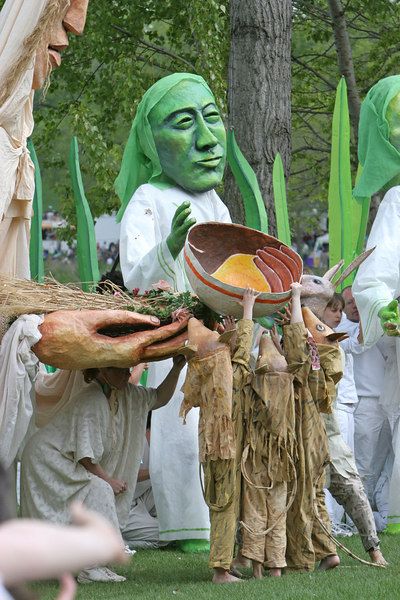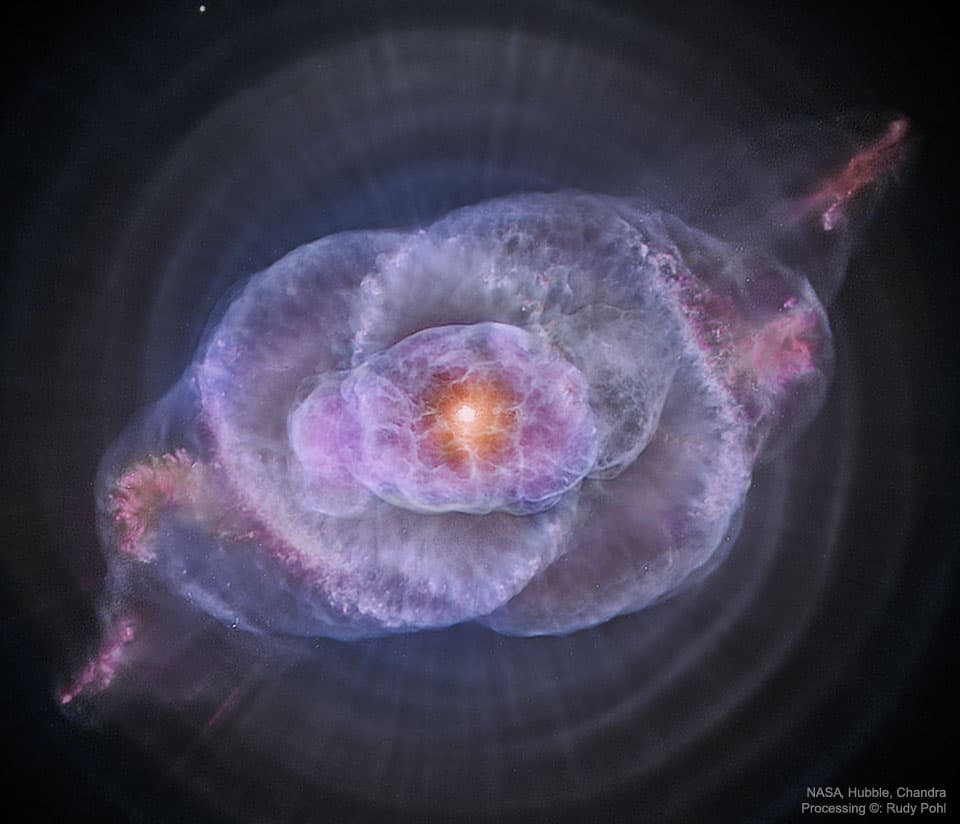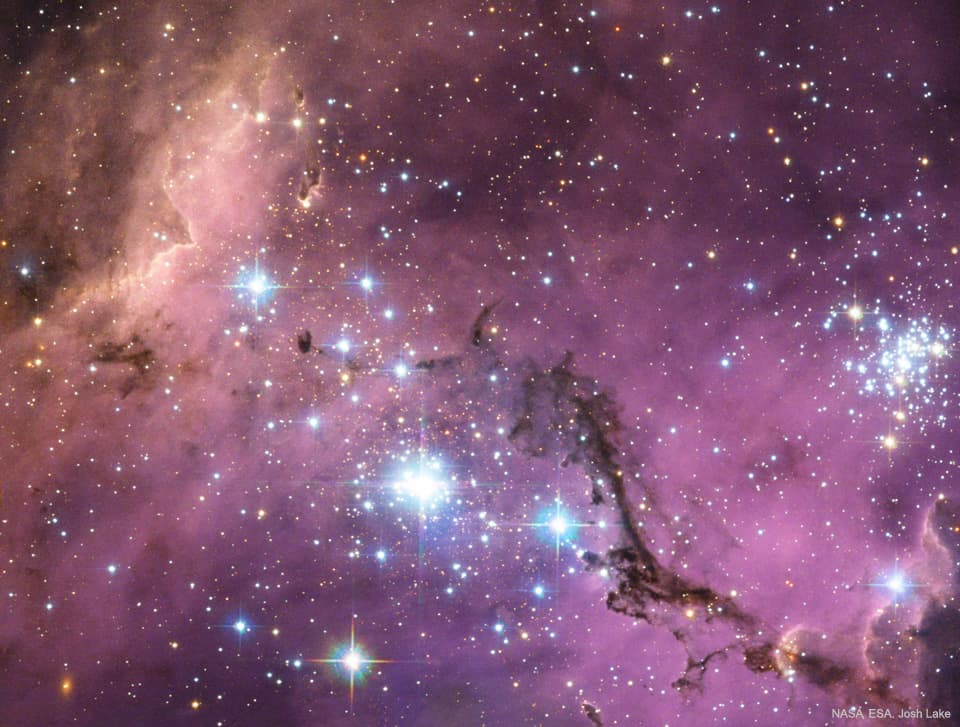Blog
Pietro Alessandro Gaspare Scarlatti (2 May 1660 – 22 October 1725) was an Italian Baroque composer, known especially for his operas and chamber cantatas. He is considered the founder of the Neapolitan school of opera. He was the father of two other composers, Domenico Scarlatti and Pietro Filippo Scarlatti.
Scarlatti was born in Palermo (or in Trapani), then part of the Kingdom of Sicily. He is generally said to have been a pupil of Giacomo Carissimi in Rome, and some theorize that he had some connection with northern Italy because his early works seem to show the influence of Stradella and Legrenzi. The production at Rome of his opera Gli equivoci nel sembiante (1679) gained him the support of Queen Christina of Sweden (who at the time was living in Rome), and he became her maestro di cappella. In February 1684 he became maestro di cappella to the viceroy of Naples, perhaps through the influence of his sister, an opera singer, who might have been the mistress of an influential Neapolitan noble. Here he produced a long series of operas, remarkable chiefly for their fluency and expressiveness, as well as other music for state occasions.
more...Brazilian vocalist, multi-instrumentalist and composer Beth Carvalho died April 30, 2019 in Rio de Janeiro, Brazil.
Elizabeth Santos Leal de Carvalho, better known as Beth Carvalho, was born May 5, 1946 in Rio de Janeiro, Brazil. She was an influential samba artist.
“Beth Carvalho was a Brazilian samba singer, musician, and composer,” said Gabriel Abaroa Jr., President/CEO of the The Latin Recording Academy. “With a career that spanned 50 years filled with multiple acclaimed recordings, Carvalho was known as the “Godmother of Samba” and a historical figure in Brazilian culture.
more...t is actually one of brightest and most highly detailed planetary nebula known, composed of gas expelled in the brief yet glorious phase near the end of life of a Sun-like star. This nebula‘s dying central star may have produced the outer circular concentric shells by shrugging off outer layers in a series of regular convulsions. The formation of the beautiful, complex-yet-symmetric inner structures, however, is not well understood. The featured image is a composite of a digitally sharpened Hubble Space Telescope image with X-ray light captured by the orbiting Chandra Observatory. The exquisite floating space statue spans over half a light-year across. Of course, gazing into this Cat’s Eye, humanity may well be seeing the fate of our sun, destined to enter its own planetary nebula phase of evolution … in about 5 billion years.
more...Shirley Valerie Horn (May 1, 1934 – October 20, 2005) was an American jazz singer and pianist. She collaborated with many jazz greats including Miles Davis, Dizzy Gillespie, Toots Thielemans, Ron Carter, Carmen McRae, Wynton Marsalis and others. She was most noted for her ability to accompany herself with nearly incomparable independence and ability on the piano while singing, something described by arranger Johnny Mandel as “like having two heads”, and for her rich, lush voice, a smoky contralto, which was described by noted producer and arranger Quincy Jones as “like clothing, as she seduces you with her voice”.
Marion Walter Jacobs (May 1, 1930 – February 15, 1968), known as Little Walter, was an American blues musician, singer, and songwriter, whose revolutionary approach to the harmonica and impact on succeeding generations has earned him comparisons to such seminal artists as Django Reinhardt, Charlie Parker and Jimi Hendrix. His virtuosity and musical innovations fundamentally altered many listeners’ expectations of what was possible on blues harmonica. He was inducted into The Rock and Roll Hall of Fame in 2008, the first artist to be inducted specifically as a harmonica player.
Jacobs’ date of birth is usually given as May 1, 1930, in Marksville, Louisiana. He was born without a birth certificate and when he applied for a Social Security card in 1940, his birthdate was listed as May 1, 1923 (over the years he often gave different years, but May 1 was constant. In some other documents he filled out before reaching the age of majority he indicated birth years of 1925 and 1928, probably to appear to be of legal age to sign contracts for recordings and club work. After reaching the age of majority based on a birth year of 1930, he consistently gave his birth year as 1930). He was raised in Rapides Parish, Louisiana, where he learned to play the harmonica. He quit school and by the age of 12 had left rural Louisiana and travelled, working odd jobs and busking on the streets of New Orleans; Memphis; Helena and West Helena, Arkansas; and St. Louis. He honed his musical skills on harmonica and guitar performing with older bluesmen, including Sonny Boy Williamson II, Sunnyland Slim, Honeyboy Edwards and others.
more...Ira Sullivan (born May 1, 1931) is a jazz trumpeter, flugelhornist, flautist, saxophonist, and composer born in Washington, D.C.. An active musician since the 1950s, he worked often with Red Rodney and Lin Halliday. He was taught trumpet by his father, saxophone by his mother and played both in 50s Chicago with such seminal figures as Charlie Parker, Lester Young, Wardell Gray and Roy Eldridge, garnering a reputation as a fearsome bebop soloist. After playing briefly with Art Blakey (1956), and mastering alto and baritone saxophone, Sullivan moved south to Florida and out of the spotlight in the early 60s. His reluctance to travel limited his opportunities to play with musicians of the first rank, but Sullivan continued to play in the Miami area, often in schools and churches. Contact with local younger players, notably Jaco Pastorius and Pat Metheny led to teaching and to a broadening of his own musical roots to include the lessons of John Coltrane‘s music and elements of jazz rock. With the addition of flute and soprano saxophone to his armoury, Sullivan moved to New York and in 1980 formed a quintet with legendary bop trumpeter Red Rodney. Resisting the temptation to follow current trends and play the music of their youth, Sullivan and Rodney worked on new material and fostered young talent to produce some fresh and stimulating music. Ira and his longtime friend and collaborator Stu Katz, jazz pianist and vibraphonist, co-led a multi-night performance with Katz at Joe Segal‘s Jazz Showcase in Chicago. A live recording of some of those performances, A Family Affair: Live At Joe Segal’s Jazz Showcase, was released in 2011. In 2014, Ira Sullivan performed in concert with jazz vocalist Erin McDougald for a live-recorded concert at 35th Street Studios which featured pianist-guitarist Rob Block, bassist Kelly Sill and drummer Charles Heath along with multi-reed player Marc Berner. Currently, Sullivan teaches at the Young Musicians Camp each summer at the University of Miami.
https://www.youtube.com/watch?v=2CTcSt9ozZc
https://www.youtube.com/watch?v=bGKGAA5E1xw
more...The Coma Cluster (Abell 1656) is a large cluster of galaxies that contains over 1,000 identified galaxies. Along with the Leo Cluster (Abell 1367), it is one of the two major clusters comprising the Coma Supercluster. It is located in and takes its name from the constellation Coma Berenices.
The cluster’s mean distance from Earth is 99 Mpc (321 million light years). Its ten brightest spiral galaxies have apparent magnitudes of 12–14 that are observable with amateur telescopes larger than 20 cm. The central region is dominated by two supergiant elliptical galaxies: NGC 4874 and NGC 4889. The cluster is within a few degrees of the north galactic pole on the sky. Most of the galaxies that inhabit the central portion of the Coma Cluster are ellipticals. Both dwarf and giant ellipticals are found in abundance in the Coma Cluster.
more...Percy Heath (April 30, 1923 – April 28, 2005) was an American jazz bassist, brother of saxophonist Jimmy Heath and drummer Albert Heath, with whom he formed the Heath Brothers in 1975. Heath played with the Modern Jazz Quartet throughout their long history and also worked with Miles Davis, Dizzy Gillespie, Charlie Parker, Wes Montgomery, and Thelonious Monk.
Heath was born in Wilmington, North Carolina, and spent his childhood in Philadelphia. His father played the clarinet and his mother sang in the church choir. He started playing violin at the age of eight and also sang locally. He was drafted into the Army in 1944, becoming a member of the Tuskegee Airmen, but saw no combat.
Deciding after the war to go into music, he bought a stand-up bass and enrolled in the Granoff School of Music in Philadelphia. Soon he was playing in the city’s jazz clubs with leading artists. In Chicago in 1948, he recorded with his brother on a Milt Jackson album as members of the Howard McGhee Sextet. After moving to New York in the late 1940s, Percy and Jimmy Heath found work with Dizzy Gillespie‘s groups. Around this time, he was also a member of Joe Morris‘s band, together with Johnny Griffin.
more...Reverend Gary Davis, also Blind Gary Davis (born Gary D. Davis, April 30, 1896 – May 5, 1972), was a blues and gospel singer who was also proficient on the banjo, guitar and harmonica. His fingerpicking guitar style influenced many other artists. His students include Stefan Grossman, David Bromberg, Steve Katz, Roy Book Binder, Larry Johnson, Nick Katzman, Dave Van Ronk, Rory Block, Ernie Hawkins, Larry Campbell, Bob Weir, Woody Mann, and Tom Winslow. He influenced Bob Dylan, the Grateful Dead, Wizz Jones, Jorma Kaukonen, Keb’ Mo’, Ollabelle, Resurrection Band, and John Sebastian (of the Lovin’ Spoonful). Davis was born in Laurens, South Carolina, in the Piedmont region. Of the eight children his mother bore, he was the only one who survived to adulthood. He became blind as an infant. He recalled being poorly treated by his mother and that his father placed him in the care of his paternal grandmother. Davis reported that when he was 10 years old his father was killed in Birmingham, Alabama; he later said that he had been told that his father was shot by the Birmingham sheriff.
https://www.youtube.com/watch?v=ynbbMiH-c8s&list=PLEB3LPVcGcWZ0hsQ5_jgSMhawAnDzy1io&index=3&t=0s
more...Massive stars, abrasive winds, mountains of dust, and energetic light sculpt one of the largest and most picturesque regions of star formation in the Local Group of Galaxies. Known as N11, the region is visible on the upper right of many images of its home galaxy, the Milky Way neighbor known as the Large Magellanic Clouds (LMC). The featured image was taken for scientific purposes by the Hubble Space Telescope and reprocessed for artistry by an amateur to win a Hubble’s Hidden Treasures competition. Although the section imaged above is known as NGC 1763, the entire N11 emission nebula is second in LMC size only to the Tarantula Nebula. Compact globules of dark dust housing emerging young stars are also visible around the image. A new study of variable stars in the LMC with Hubble has helped to recalibrate the distance scale of the observable universe, but resulted in a slightly different scale than found using the pervasive cosmic microwave background.
more...Ray Barretto (April 29, 1929 – February 17, 2006) was a Puerto Rican conga drummer and bandleader born in New York. Throughout his career as a percussionist, he played a wide variety of Latin music styles, as well as Latin jazz. His first hit, “El Watusi”, was recorded by his Charanga Moderna in 1962, becoming the most successful pachanga song in the United States. In the late 1960s, Barretto became one of the leading exponents of boogaloo and what would later be known as salsa. Nonetheless, many of Barretto’s recordings would remain rooted in more traditional genres such as son cubano. A master of the descarga (improvised jam session), Barretto was a long-time member of the Fania All-Stars. His success continued into the 1970s with songs such as “Cocinando” and “Indestructible”. His last album for Fania Records, Soy dichoso, was released in 1990. He then formed the New World Spirit jazz ensemble and continued to tour and record until his death in 2006.
https://www.youtube.com/watch?v=iEFloE3H3bc
more...Jean-Baptiste Frédéric Isidor, Baron Thielemans (29 April 1922 – 22 August 2016), known professionally as Toots Thielemans, was a Belgian jazz musician. He was known for his harmonica playing, as well as his guitar, whistling skills, and composing. According to jazz historian Ted Gioia, his most important contribution was in “championing the humble harmonica”, which Thielemans made into a “legitimate voice in jazz”. He eventually became the “preeminent” jazz harmonica player.
His first professional performances were with Benny Goodman‘s band when they toured Europe in 1949 and 1950. He emigrated to the U.S. in 1951, becoming a citizen in 1957. From 1953 to 1959 he played with George Shearing, and then led his own groups on tours in the U.S. and Europe. In 1961 he recorded and performed live one of his own compositions, “Bluesette”, which featured him playing guitar and whistling. In the 1970s and 1980s, he continued touring and recording, appearing with musicians such as Oscar Peterson, Bill Evans, Dizzy Gillespie, Kenny Werner, Pat Metheny, Jaco Pastorius, Elis Regina and Paquito D’Rivera.
Among the film soundtracks that Thielemans recorded are The Pawnbroker (1964), Midnight Cowboy (1969), Cinderella Liberty (1973), The Sugarland Express (1974) and Looking for Mr. Goodbar (1977). His harmonica theme song for the popular Sesame Street TV show was heard for 40 years. He often performed and recorded with Quincy Jones, who once called him “one of the greatest musicians of our time.” In 2009 he was designated a Jazz Master by The National Endowment for the Arts, the highest honor for a jazz musician in the United States.
https://www.youtube.com/watch?v=dU5CB2XBDQQ
more...Edward Kennedy “Duke” Ellington (April 29, 1899 – May 24, 1974 Washington, DC) was an American composer, pianist, and leader of a jazz orchestra, which he led from 1923 until his death over a career spanning more than fifty years.
Born in Washington, D.C., Ellington was based in New York City from the mid-1920s onward and gained a national profile through his orchestra’s appearances at the Cotton Club in Harlem. In the 1930s, his orchestra toured in Europe. Although widely considered to have been a pivotal figure in the history of jazz, Ellington embraced the phrase “beyond category” as a liberating principle and referred to his music as part of the more general category of American Music rather than to a musical genre such as jazz.
Some of the jazz musicians who were members of Ellington’s orchestra, such as saxophonist Johnny Hodges, are considered to be among the best players in the idiom. Ellington melded them into the best-known orchestral unit in the history of jazz. Some members stayed with the orchestra for several decades. A master at writing miniatures for the three-minute 78 rpm recording format, Ellington wrote more than one thousand compositions; his extensive body of work is the largest recorded personal jazz legacy, with many of his pieces having become standards. Ellington also recorded songs written by his bandsmen, for example Juan Tizol‘s “Caravan“, and “Perdido“, which brought a Spanish tinge to big band jazz. In the early 1940s, Ellington began a nearly thirty-year collaboration with composer-arranger-pianist Billy Strayhorn, whom he called his writing and arranging companion. With Strayhorn, he composed many extended compositions, or suites, as well as additional short pieces. Following an appearance at the Newport Jazz Festival, in July 1956, Ellington and his orchestra enjoyed a major revival and embarked on world tours. Ellington recorded for most American record companies of his era, performed in several films, scored several, and composed a handful of stage musicals.
Ellington was noted for his inventive use of the orchestra, or big band, and for his eloquence and charisma. His reputation continued to rise after he died, and he was awarded a posthumous Pulitzer Prize Special Award for music in 1999.
more...More Posts
- John Belushi
- Aaron Neville
- Jimmy Forrest
- Joe Albany
- World Music Memorial with Elza Soares
- Daily Roots with Wayne Wade
- Cosmos NGC 1300
- Gary Burton
- Curtis Counce
- Django Reinhardt
- World Music with Tinariwen
- Daily Roots with Barry Brown
- Cosmos IC 1805
- Eberhard Weber
- Sam Cooke
- J. J. Johnson
- World Music Memorial for Héctor “Tito” Matos
- Daily Roots with Jacob Miller
- Rocky Horror Picture Show 2022
- Cosmos MHO 2147




